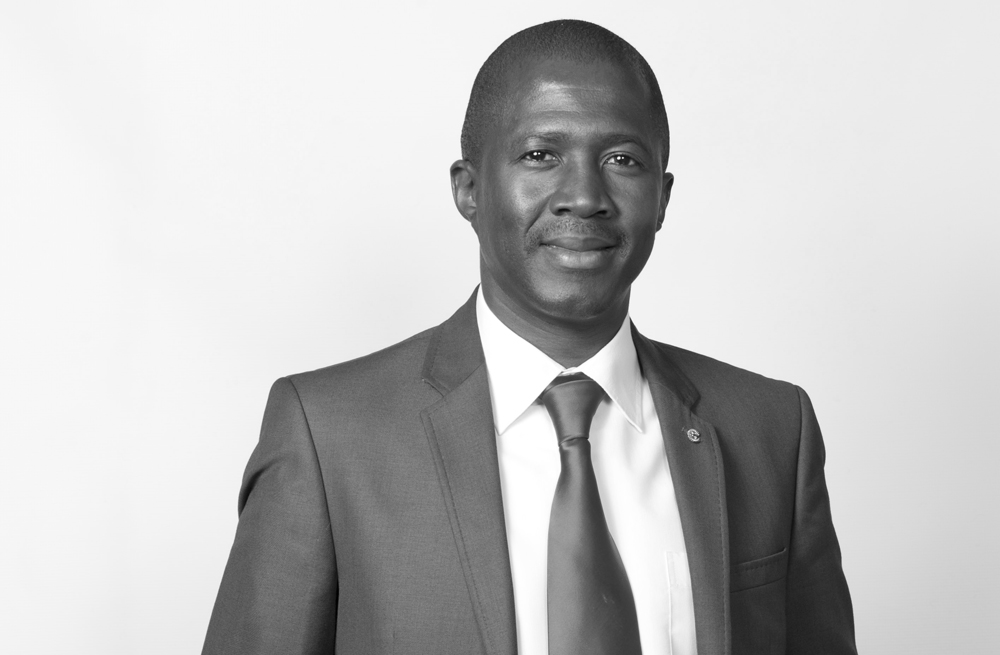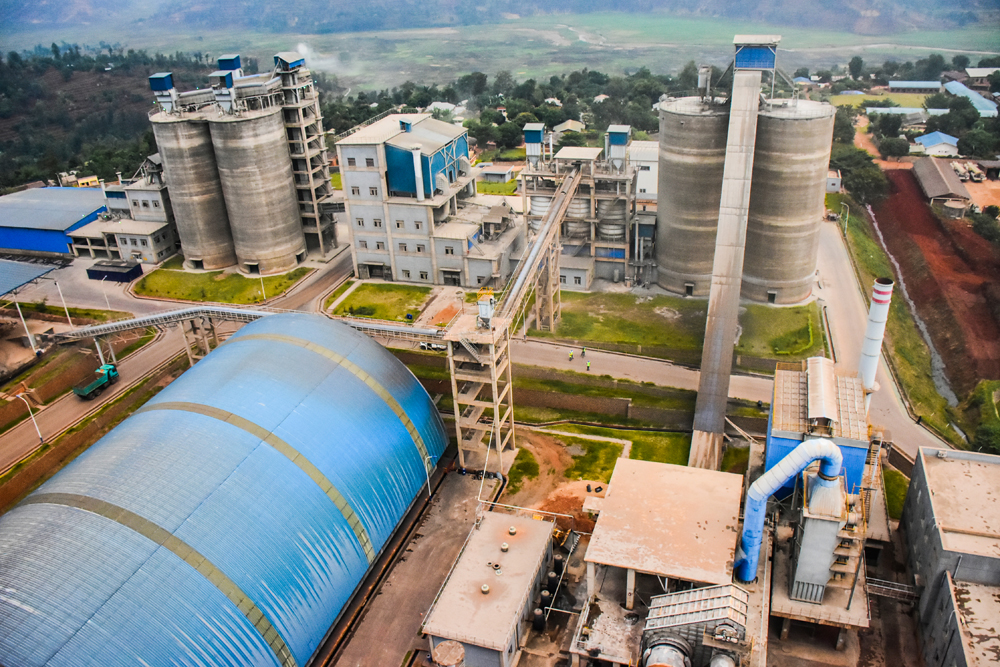
At the start of the decade, PPC Ltd embarked on an African expansion programme with the aim of generating a big chunk of its turnover elsewhere on the continent. In fact, the company had a target to grow revenues outside its home market of South Africa from 23% in 2015 to 40% by 2017, a feat well accomplished. The strategic aspiration, however, has always been to become a major African cement producer.
Having commissioned capacity building projects in strategic markets of Zimbabwe, Ethiopia, Rwanda and the Democratic Republic of Congo (DRC) some years ago, PPC today is basking in the glory of its forward-thinking investments as these markets have become an integral part of the company’s overall business. Judging by PPC’s financial results for the year ended 31 March 2020, the tough operating conditions experienced in the home market were offset by resilient performances in markets outside South Africa.
The cement industry in South Africa has been in dire straits in recent years, largely due to unprecedentedly low levels of demand as a result of slow economic growth, which has forced producers to halve their capacities in some instances. The situation has been exacerbated by the influx of cheap, substandard cement imports, as well as third-party cement blenders thriving on deliberately flouting standards to undercut prices. Amid these tough trading conditions, the COVID-19 pandemic struck during the last month of PPC’s financial year in March, with dire consequences.
To provide context, PPC Cement South Africa and Botswana saw a decline in revenue of 11% to R4.8 billion, delivering 36% lower EBITDA (earnings before interest, taxes, depreciation, and amortisation). Cement volumes were 15% to 20% lower in a market predicted to have contracted by around 7% to 10%. Imports and blender activity further impacted the competitive landscape, with cement imports increasing by 36% to 1.3 million tonnes for the period. Overall, group revenue for FY20 was slightly lower at R10.2 billion, largely due to a reduced contribution from the South African cement business.
In an environment where the South African business struggled, the international operations had to come in and support the group, says Mokate Ramafoko, MD – PPC International. To provide context, he says the bulk of the R1.6 billion total group EBITDA was generated from markets outside South Africa.
“If you look at the segmental analysis of our results for FY20, you will see that out of the R1.6 billion total EBITDA, approximately R1 billion was generated from our international markets. The bulk of it actually came from our Zimbabwe business, followed by Rwanda and the DRC,” explains Ramafoko.
While PPC’s cement volumes in Zimbabwe declined by 15% to 20% in a market that contracted by a similar margin, revenue increased 29% to R1.9 billion, while EBITDA grew by 53% to R707 million, contributing almost 70% of group EBITDA. Commenting on why Zimbabwe is seemingly resilient in the face of tough economic conditions prevailing in the country, Ramafoko says the revenue increase was buoyed by stable realised prices and cost reduction.
“One of the key factors driving our international business is stable pricing in some of these markets. Apart from Ethiopia, which is very similar to South Africa in terms of cement pricing, the other three countries – Zimbabwe, Rwanda and the DRC – are boosted by good cement prices, although we have much lower utilisation,” explains Ramafoko.
Apart from pricing, Ramafoko says these businesses are in developing markets. For example, while trading conditions in Zimbabwe continue to be impacted by the hyperinflationary environment, unstable power supply and shortage of foreign currency, PPC continues to secure large infrastructure projects in hard currency.
In terms of projects, PPC Zimbabwe is supplying almost 80% of the government projects underway in the country. For example, the company supplied the Gwai-Shangani dam project, where at least US$122 million has already been spent under the Public Sector Investment Programme to address perennial water challenges in Bulawayo, Zimbabwe’s second-largest city. The project was initially scheduled to be completed in December 2021, but has been stalled by the outbreak of COVID-19.
Elsewhere, PPC is also supplying the Zimbabwe government’s 600MW Hwange Power Station expansion project. The US$1.5 billion project, being carried out by Chinese firm Sinohydro, entails the addition of two power generating units, units 7 and 8, to the existing six units that were commissioned between 1983 and 1987.
PPC, adds Ramafoko, is also supplying the Beit Bridge-Harare-Chirundu road project. The 971km project involves the dualisation, upgrading and tolling of the country’s major highway. The estimated completion date is 2022 and the projected total cost is US$2.7 billion.
“One of our key strengths is that we are competitive in the specialised cement and application space in Zimbabwe. We have seen strong growth from our bulk sector, where we are involved with sectors such as tile making and brick manufacturing. It has always been our focus to grow the bulk sector, which bodes well for our growth. We have also built key relationships with construction and mining companies. Mining is a new market developing for us in Zimbabwe, given the amount of investment going into this sector in the country,” says Ramafoko.
The Zimbabwean growth is supported by PPC’s recent investment in its US$85 million, 700,000 tonne per year mill in Harare. Commissioned at the end of 2016, the Harare plant was by far the biggest capital project in the history of PPC Zimbabwe, representing PPC Ltd’s vote of confidence in the future of the country.
Elsewhere in the DRC, PPC Barnet achieved revenue growth of 5% to R607 million on the back of higher pricing and translation gains, and generated EBITDA of R94 million in a market that is projected to have seen an overall increase in demand of 4% to 8%.
Commenting on the state of the market, Ramafoko says despite the current challenges around continued cement imports, the country offers a lot of opportunity. To make the most of the prospects, PPC Barnet commissioned its US$280 million, 1 million tonne per year plant at the end of 2016.
“The DRC used to operate with only one cement plant, despite the vastness of the country, with a population of approximately 90 million people. The DRC has traditionally had a short supply of cement, relying on imports. In the south, for example, the bulk of the cement was imported from Zambia,” he says.
The DRC is vast and blessed with natural resources, which can be a driver for much needed economic growth. Ramafoko believes the infrastructural gap in the country will drive cement demand. “The DRC, under the new administration of President Félix Tshisekedi, is prioritising infrastructure development to ease the movement of people and goods in the country. To give an idea, travelling between the capital Kinshasa and Lubumbashi or Goma by road is a mission impossible. The only way to connect these three major cities is by air,” he says. “Upgrading infrastructure will play a critical role in the DRC’s quest to diversify its economy and reduce poverty. It will also be an important source of growth on its own.”
In Rwanda, where PPC achieved revenue growth of 6% to R936 million, Ramafoko says robust cement demand was driven by large infrastructure projects, growth in the retail market and export demand from the eastern DRC. “A key driver of the cement market in Rwanda is a deliberate move by the government to roll out infrastructure projects. Rwanda understands the importance of infrastructure in the development of a competitive private sector. To this end the government continues to invest heavily in infrastructure,” he says.
Pre-COVID-19, Rwanda and Ethiopia were among the fastest growing countries in the world. Ramafoko says the two countries have been the “shining armours” of Africa in terms of economic growth. As a country, Rwanda also understands the importance of the ease of doing business. “There is a push to drive ease of doing business, which has made the country attractive to foreign investment,” he says.

PPC commissioned its CIMERWA plant in August 2015, the only integrated cement producer in the country. The modernised 600,000 tonne per year CIMERWA plant is strategically located, positioning the company at the centre of Rwanda’s inland growth.
Elsewhere in Ethiopia – where PPC commissioned its 1.4 million tonne per year plant at a capital cost of US$180 million in 2017 – the government has announced a massive infrastructure drive to the tune of US$2 billion, says Ramafoko. The construction industry in the country, he says, is growing and offering better prospects for the cement market through the various ongoing megaprojects.
Ethiopia is driving to become self-sufficient when it comes to power generation. The country has done quite a lot in terms of hydropower development, says Ramafoko. A case in point is the GERD project, which has been under construction since 2011. Located in the Benishangul-Gumuz Region of Ethiopia, about 15km east of the border with Sudan, the 6,450MW dam will be the largest hydroelectric power plant in Africa when completed, as well as the seventh-largest in the world.
Another project of note currently underway in the country is the 752.7 km Ethiopia-Djibouti railway modernisation project, also known as the Addis Ababa-Djibouti Railway, the first modern electrified railway line in East Africa. It is jointly owned by the governments of Ethiopia and Djibouti.
Apart from these megaprojects, Ramafoko says there is generally a lot of infrastructure development activity in the capital, Addis Ababa, with the renewal of the inner city and several housing projects in response to urbanisation. “Ethiopia is also generally less industrialised than most of its peers, and the government has been calling for industrial partners to invest in the country to increase local manufacturing in order to reduce imports. Together, these factors have been contributing to cement demand in the country,” concludes Ramafoko.








